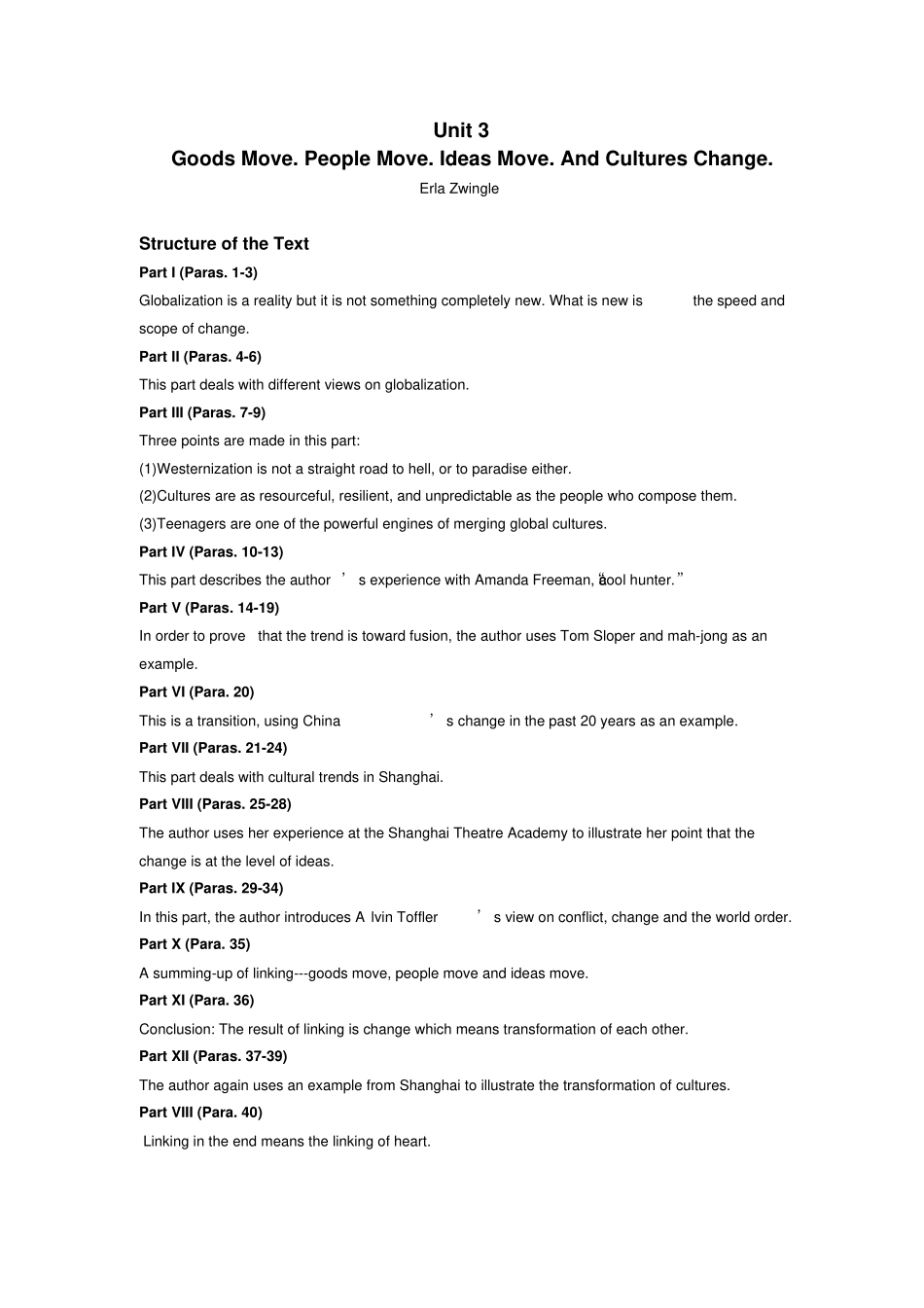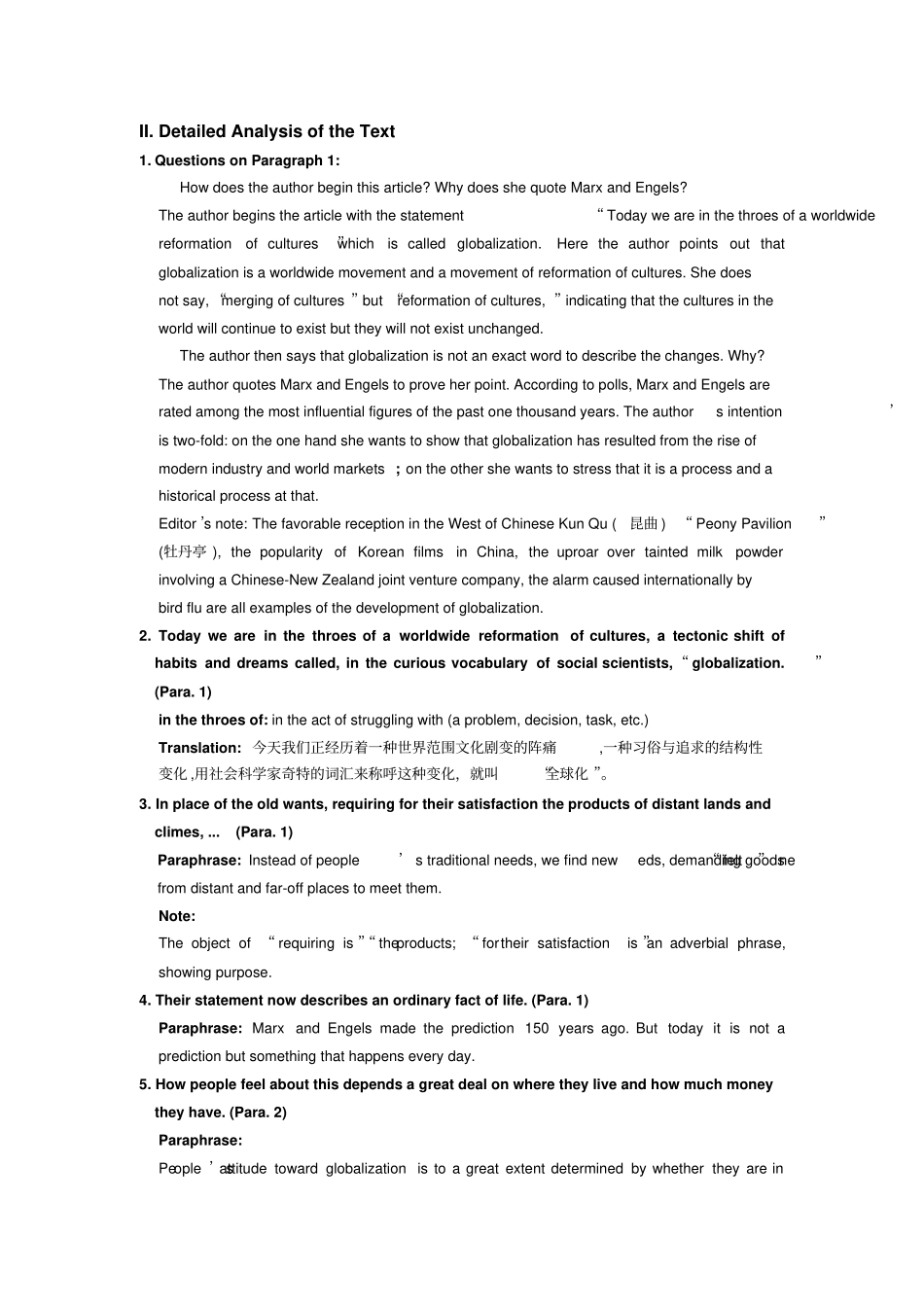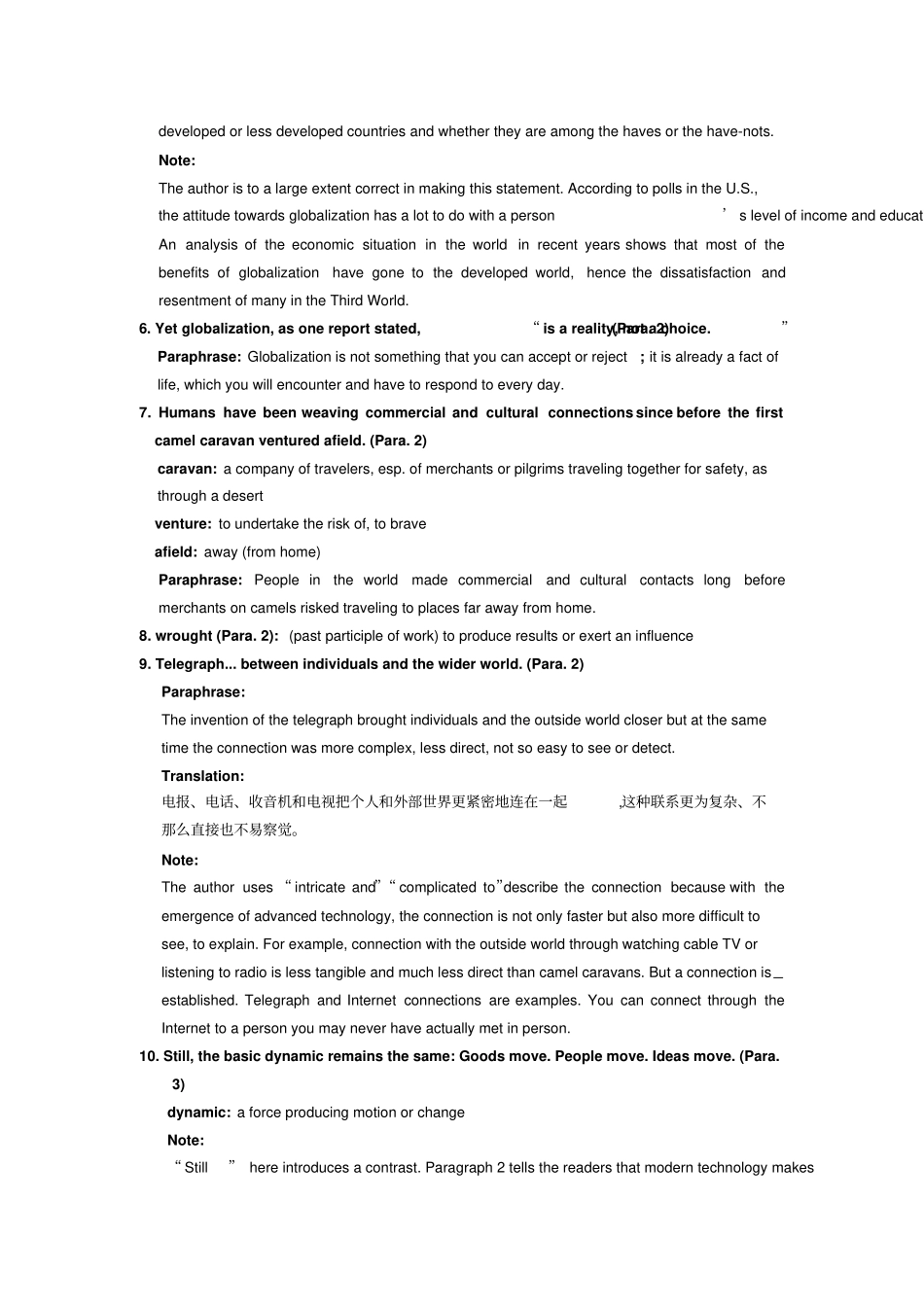Unit 3 Goods Move. People Move. Ideas Move. And Cultures Change. Erla Zwingle Structure of the Text Part I (Paras. 1-3) Globalization is a reality but it is not something completely new. What is new is the speed and scope of change.Part II (Paras. 4-6) This part deals with different views on globalization. Part III (Paras. 7-9) Three points are made in this part: (1)Westernization is not a straight road to hell, or to paradise either. (2)Cultures are as resourceful, resilient, and unpredictable as the people who compose them. (3)Teenagers are one of the powerful engines of merging global cultures. Part IV (Paras. 10-13) This part describes the author ’ s experience with Amanda Freeman, a “cool hunter.”Part V (Paras. 14-19) In order to provethat the trend is toward fusion, the author uses Tom Sloper and mah-jong as an example. Part VI (Para. 20)This is a transition, using China’ s change in the past 20 years as an example.Part VII (Paras. 21-24) This part deals with cultural trends in Shanghai. Part VIII (Paras. 25-28) The author uses her experience at the Shanghai Theatre Academy to illustrate her point that the change is at the level of ideas. Part IX (Paras. 29-34) In this part, the author introduces A lvin Toffler’ s view on conflict, change and the world order.Part X (Para. 35) A summing-up of linking---goods move, people move and ideas move. Part XI (Para. 36) Conclusion: The result of linking is change which means transformation of each other. Part XII (Paras. 37-39) The author again uses an example from Shanghai to illustrate the transformation of cultures. Part VIII (Para. 40) Linking in the end means the linking of heart. II. Detailed Analysis of the Text 1. Questions...


